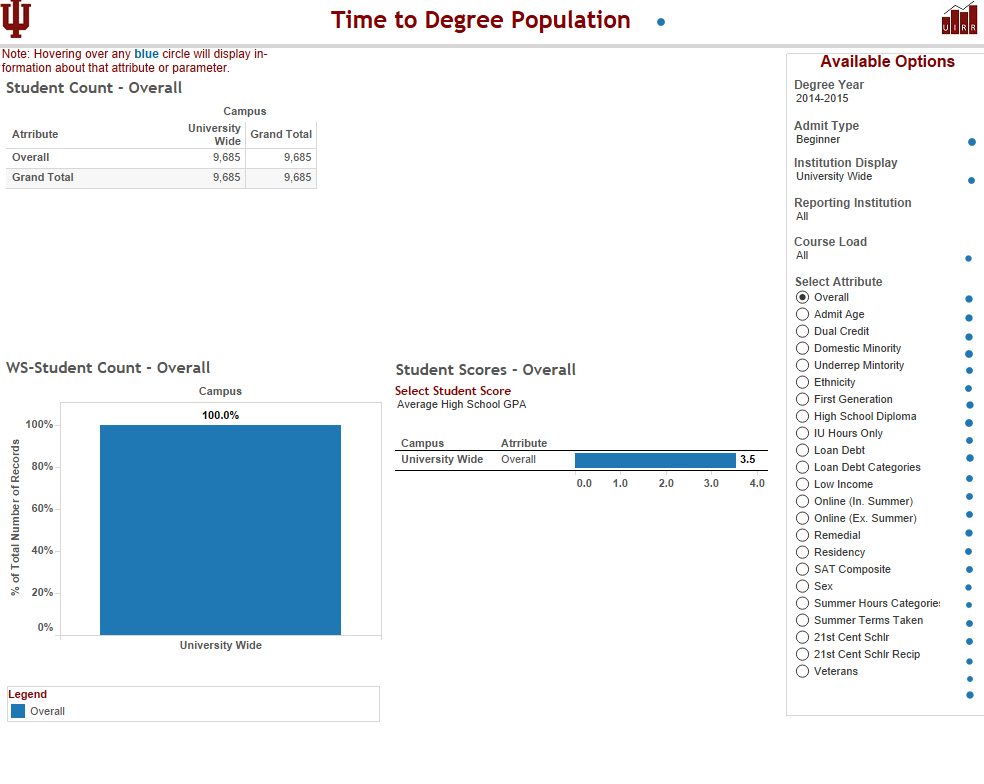Traditional graduation rates are calculated by taking a cohort of incoming first-time in college students who are enrolled full-time and tracks them through 150% of the (NORMAL) time to determine successful outcomes (1.5 years for certificates, 3 years for associate degrees and 6 years for bachelor degrees). But, this process excludes certain enrollees (e.g. part-time, transfer and does not give credit for a student who graduates after the six-year time frame. IU time to degree (TTD) takes a different approach - the TTD captures all IU first-time bachelor's degree recipients in a particular year and looks back to see how long it took those students to graduate. A student who receives their bachelor's degree within four years is considered to have received their degree on-time.
Bachelor Degree Recipient Profile
Interactive Reports
These views are a result of several state and federal initiatives and incentives during the past few years (e.g. Reaching Higher Achieving More, Complete College of America). UIRR has designed these data views with drill down capabilities to easily research the timeliness of Bachelor recipient degree completions. These views contain the most recent five years of data.
(Requires IU Staff login)
Summary Reports
- Incoming Characteristics & Populations
- Nearly one third of bachelor's degrees awarded in 2014-15 were to students who came to IU as transfers.
- More than 80% of Bachelor graduates took summer coursework.
- Beginner domestic minority students who were awarded degrees in 2014-15 increased by 11.4% from the previous year.
- Time to Degree Summary
- Almost 71% of beginner students who took dual credit coursework completed their degrees on time.
- Of those beginner students who graduated with no loan debt (4,074), almost 71% completed their degrees on time.
- Beginner Attempted vs. Earned Hours by CIP Code Description
- Almost 74% of all beginner students in the Biological and Biomedical Science and Public Administration programs completed their degrees on-time.


